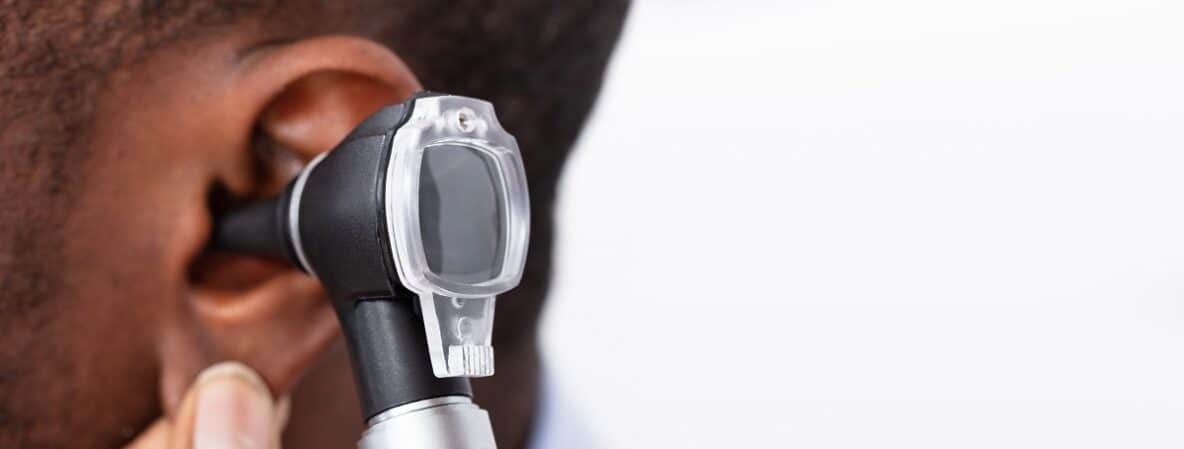Noise-induced hearing loss
While aging continues to be the greatest predictor of hearing loss, noise exposure can pack a punch. In fact, many people have a mix of hearing loss due to both causes. In the case of noise-induced hearing loss, the damage can occur all at once like in a traumatic accident, crash or explosion. The levels of noise in these instances are exceptionally loud and the person experiencing damage will probably be aware of the hearing loss immediately. The ears might hurt or sound might be muffled, like you’re listening underwater. In extreme cases, the sense of hearing might be gone altogether at first, only to return to some degree later.
Noise-induced hearing loss that occurs slowly and over time can be more difficult to notice in the moment. We might have small instances of damage, like routinely walking by a noisy construction site or using a blowdryer close to our ears every day, that build up over the course of years or even decades. Instead of painful sensations, we might not even sense that the sound environment we’re in is dangerous. And while we won’t experience an overall lowering of volume, as the damage compounds, we will eventually have trouble understanding speech.
How excessive noise damages hearing
Like age, noise contributes to damage absorbed by the inner ear cells that do the heavy lifting when it comes to our sense of hearing. They receive the noise around us, collected by the architecture of the ear. The inner ear cells translate the noise into electrical signals and send this sound information to the brain for processing. When they are damaged, they don’t repair themselves. Instead, we lose our reserve of inner ear cells so that we are able to gather less sound and thus, send less sound information to the brain. We experience this declining input of sound as hearing loss and our brain often has to work much harder to piece together the puzzle of what is being said around us while missing more and more of the pieces.
Where is the safe noise threshold?
Sound that measures above 85 decibels — the unit of measurement for sound — is considered risky. To put that into perspective, a normal conversation typically falls around 60-65 decibels while a lawn mower might clock in at 90 decibels.
As the volume increases, experts advise that our exposure time decreases. That means that while we might safely listen to 85 decibels for eight hours, we can only listen to 90 decibels for two and a half hours. The window of safe exposure narrows sharply as decibels rise even further. When sounds reach 100 decibels, the exposure time should be kept to 15 minutes and sounds over that fall quickly into the single digit minute range.
The short answer to the question of how loud is too loud is that we should severely limit how long we expose our ears to volumes over 90 decibels if we want to decrease the chance of hearing damage.
Surprisingly loud, everyday sounds
We tend to find noise over 85 decibels annoying, like a lawnmower, but we become used to them over time. In fact, sometimes we enjoy the dangerous decibels! The average set of earbuds go up to a maximum of 100 decibels. Which means that if you listen to an entire album at maximum volume, you’ve overexposed your ears to risky volumes by at least thirty minutes.
Live music, regardless of the genre, often exceeds safe standards of noise exposure. A symphonic concert can reach levels of 100 decibels and a rock concert hovers between 100 and 120 decibels. That a lot of overexposure and even the foam ear plugs sold by many venues would be a smart sound barrier to employ.
Season ticket holders might want to pack a pair of ear plugs, too. Sporting events and stadiums routinely hit 120 decibels, albeit in short bursts. But a rowdy audience of superfans can hit those high end decibels regularly if your team is having a good day.
Folks who use motorized recreational vehicles like ATVs, snowmobiles and jet skis might also limit their noise exposure. These machines can emit sounds of up to 100 decibels.
Frequent movie-goers should also pay attention to their noise environment. The industry does not regulate volume and the choice is ultimately up to the independent managers. An investigative report out of New York found that even children’s films exceeded safe thresholds, anywhere from 90 to 100 decibels.
Schedule a hearing exam
Prioritize your hearing health by scheduling a hearing consultation today. We’ll guide you through a simple hearing exam and discuss the best ways to protect your hearing now for a healthier hearing future.

